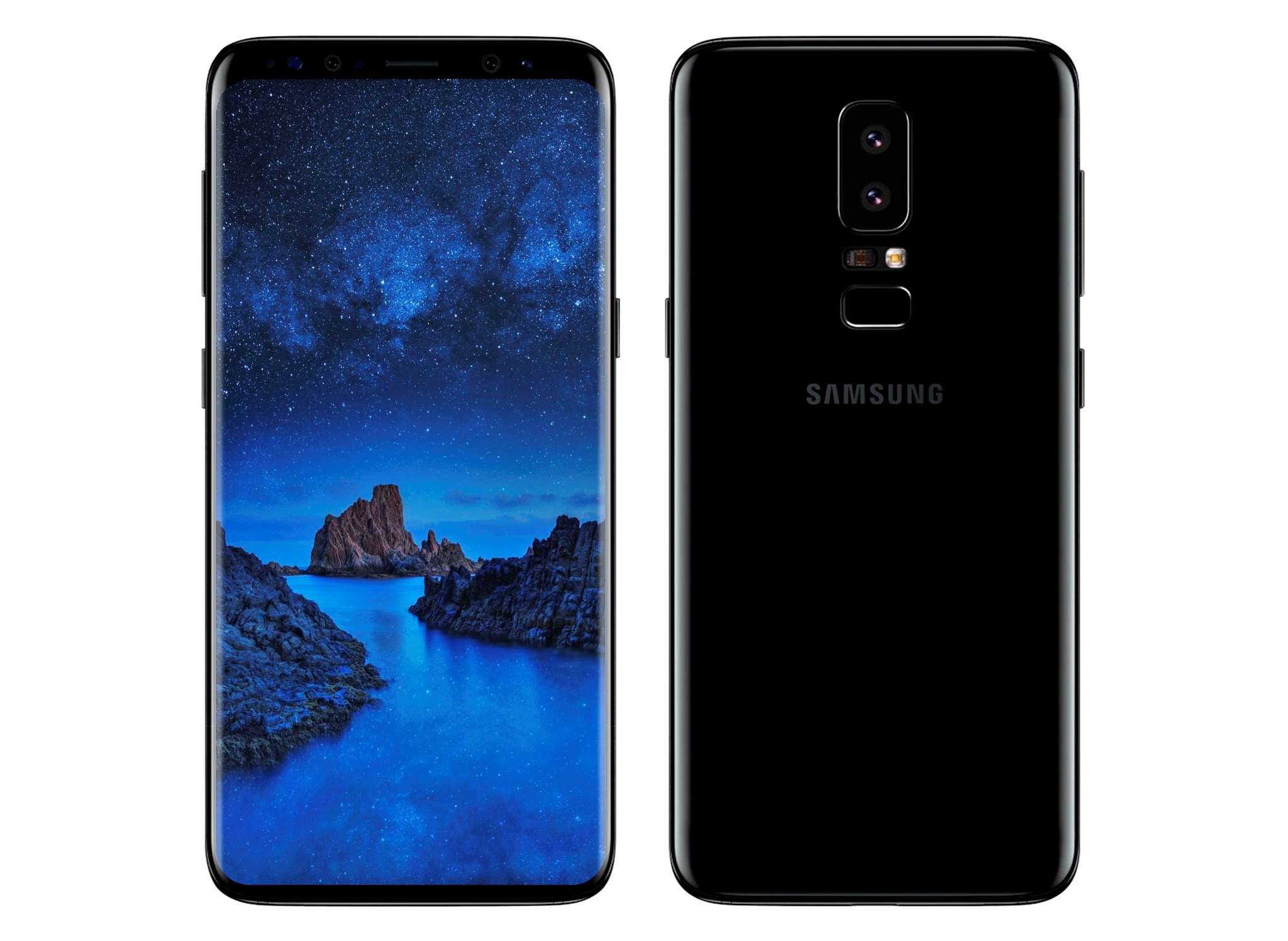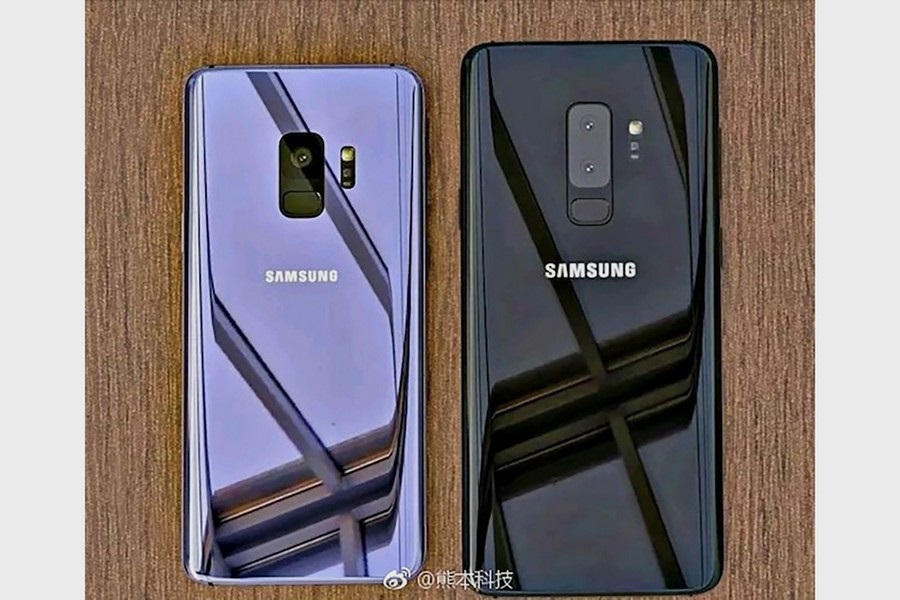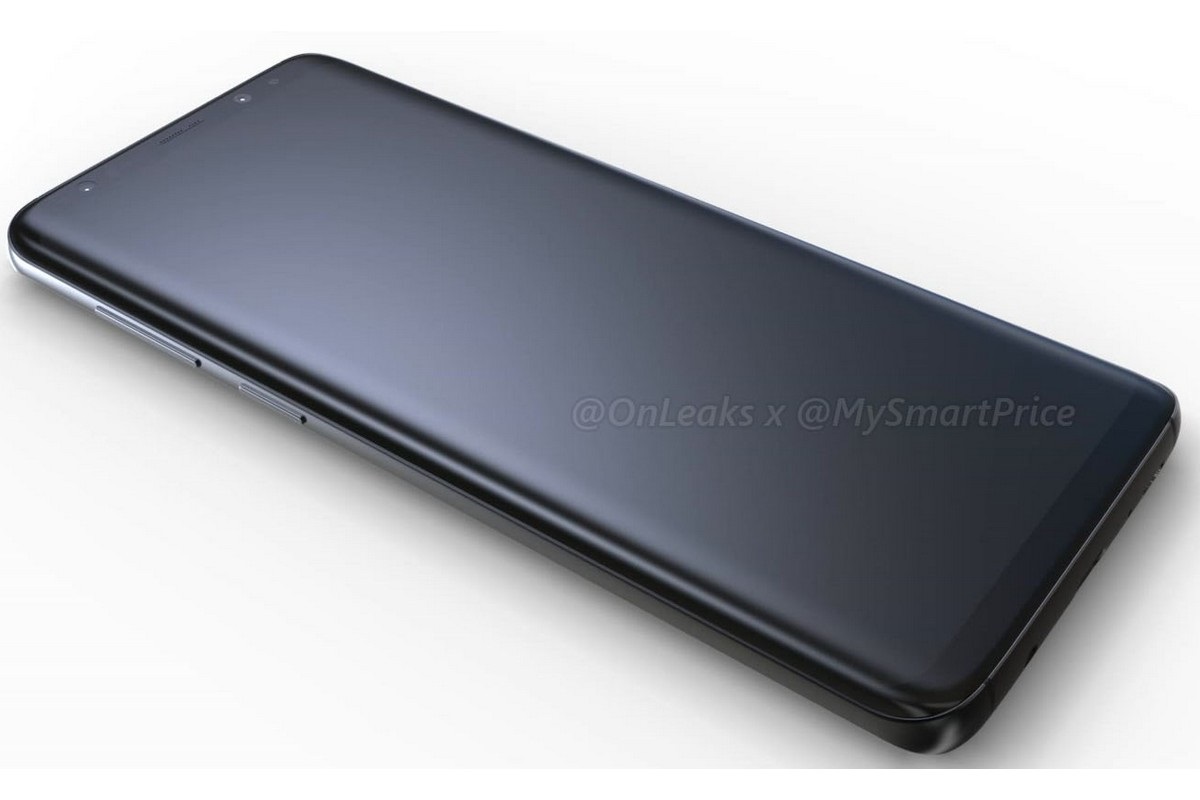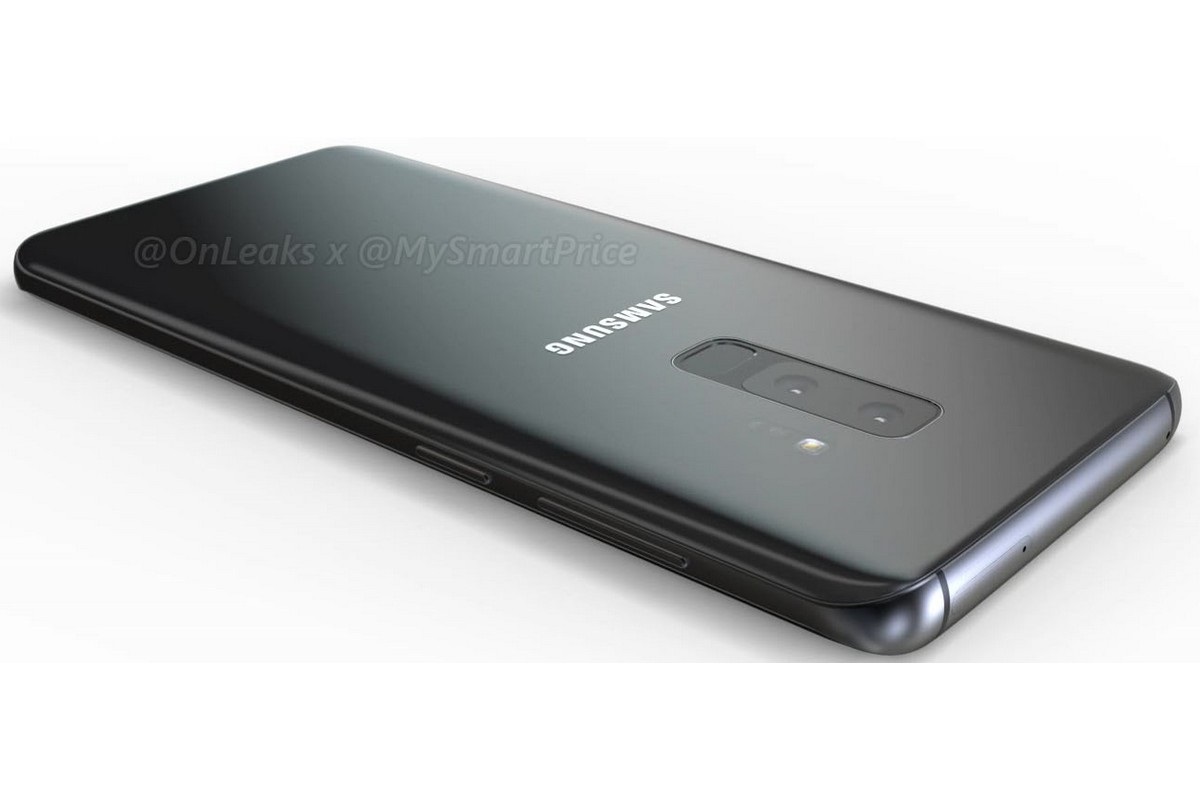

Samsung Galaxy S9: What we know
The Samsung Galaxy S9 will be introduced by the Korean manufacturer at the Mobile World Congress (MWC) in Barcelona, which starts on February 26. Expectations are high. Last year, Samsung had to handle the sensitive issue of the "explosive" Galaxy Note 7 phones, and now they are faced with another challenge: the Galaxy S8 was, and still is, a nearly perfect smartphone. Not much is known about its successor, but we can say with a fair amount of certainty that it will be available in two versions - the classic Galaxy S9 and the larger Galaxy S9+. Still, speculation is mounting. So what can we expect from the new Samsung Galaxy S9?

Speculation about Samsung Galaxy S9 - summary
- Updated January 12, 2018 - Samsung Galaxy S9 will get some new features
- Security - fingerprint or face scan?
- Display - Infinity once again
- Camera - dual and with a record aperture
- Performance - excellent as ever
- Comparison - serious threat for its competitors
- Price - when is it coming and at what price?
Updated January 12, 2018 - Samsung Galaxy S9 will get some new features
Another entry in our series of leaks is about the upcoming Samsung Galaxy S9, which will be presented at the MWC in Barcelona at the end of February. This time we managed to get a photo of the rear side of the phone package, which shows some interesting information.

This picture of the Samsung Galaxy S9 package shows, among other things, basic camera information.
In addition to the expected 5.8" display size (5.6" plus rounded edges), or increased IP68 resistance, we can see some camera information which confirms that neither of the cameras will be dual. The 8Mpx front camera with an eye iris scanner will be perfect for selfies, but the main photographic feature is the 12Mpx rear camera with a Dual Pixel sensor. Note that this is not a dual camera; that might be available on the larger Samsung Galaxy S9+.
An interesting feature is the variable aperture (f/1.5 - f/2.4), which should provide high-quality photos regardless of lighting conditions, as well as helping produce a nice bokeh effect. The S9 should also support Super Slow-mo mode, which is similar to what we know from Sony. In addition, the Samsung Galaxy S9 should operate with 4GB of RAM and 64GB of storage space. Also worth mentioning are the enhanced speakers under the patronage of AKG.
Unlocking via face scan? Could it be cheated with a photo?
After the summer of 2017, there was speculation about Samsung's desire of implementing a fingerprint reader directly beneath the phone's display. Unfortunately, it appears that this technology is still not ready for mass production and it is highly doubtful that the Galaxy S9 would use it. However, there are rumours that Samsung could place the reader under the display on the Galaxy Note9 smartphone which should be unveiled in the second half of 2018.
For the Galaxy S9, it is likely that the fingerprint reader will stay on the back of the phone, but this time below the camera rather than next to it to provide better reachability. This is suggested by new leaks from the Samsung Health app. Samsung could focus on improving its facial scanning and retinal technology for this upcoming smartphone. It remains to be seen whether they will go the same way as Apple on the iPhone X, which uses 3D scanning, or whether they will make use of artificial intelligence in some way. Either way, it is unlikely that the Samsung Galaxy S9 could be unlocked with the photo of its owner. Additionally, a new leak from Samsung Health also implies the presence of a pulse oximeter that would monitor proper oxygen saturation of tissues. The method is used, for example, in intensive care units and operating theatres.
On the left you can see the expected design of the Samsung Galaxy S9 and S9+. On the right is an example of a pulse oximeter that would monitor oxygen saturation of tissues.
The Samsung Galaxy S9 again offers an Infinity display with a thin frame
According to available renders, it is likely that Samsung will once again use their Infinity display with rounded edges. At the top and bottom of the panel, it is expected that the surrounding frame will be further reduced, thus stretching the display to an even larger area on the phone's front side. However, the frame will certainly not be completely removed, at least on the top of the phone where it is crucial due to the aforementioned face scan.
Read all about the previous model in our Samsung Galaxy S8 review.
The Samsung Galaxy S9's diagonal size should remain unchanged, according to speculation. That means 5.8" for the standard S9 and 6.2" for the larger S9+. Are we going to see a reduction of the phones' dimensions (and weight), though? Another thing which is likely to remain the same is the type of display used. As with the Galaxy S8, we can expect the ninth generation of Super AMOLED technology and the same resolution of 2960 × 1440px.
A dual camera only for the Galaxy S9+ and not the S9?
The Samsung S9 smartphone would surely benefit from a dual-lens camera which would allow experiments with a blurry background behind the photographed subject. The Galaxy Note8, for example, has a pair of rear 12Mpx sensors and an 8Mpx front camera. However, recent information indicates that the dual camera will only be available on the larger Galaxy S9+. The resolution of the rear dual camera of the Galaxy S9+ will probably remain at 12Mpx. Interestingly, according to some leaks, the same resolution could be given to the front camera, and other leaks indicate that the front camera could even be dual as well. However, this does not seem very likely and Samsung will probably deem it unnecessary given that the standard selfie camera is sufficient for most users.

This is the expected form of the Samsung Galaxy S9. There is speculation about a minimal frame, a dual camera, and a fingerprint reader on the back of the phone.
According to the latest information, the Samsung Galaxy S9 will boast a very impressive camera. The rear camera is rumoured to have an aperture of f/1.5 for one sensor and f/2.4 for the other. The aperture should also be adjustable, which is something no other phone can match; the LG V30 and Huawei Mate 10 Pro have an aperture of f/1.6, but it is not adjustable.
As for videos, the Galaxy S9 will most likely be able to shoot at up to 4K resolution (3840 × 2160px) at 60fps, which is twice the capability of Galaxy S8. Of course, as with other phones in this class, we can expect optical image stabilization, special modes, and practical manual settings of advanced parameters such as time, ISO, and more. There is no doubt that the S9 will try to overcome the best photomobiles of 2017.
The new model will not look too different from its predecessor, but it is expected to have a dual camera. It's not clear whether this applies to both models, or just the Galaxy S9+.
Comparison of Samsung Galaxy S9 to Samsung Galaxy S8
The Samsung Galaxy S9 is likely to be quite similar to the previous Galaxy S8 model. Rather than redefining the previous model, as the S8 did, the S9 brings less noticeable innovations in the form of higher performance or better camera capabilities in the form of the rumoured dual sensor. Due to the dual camera, we will be able to enjoy the gorgeous depth of field effects known from the Samsung Galaxy Note8, which will undoubtedly catapult the Samsung S9 among the best photomobiles in 2018.
Another interesting topic is the alleged absence of a 3.5mm headphone jack which is slowly becoming the norm for more expensive mobile phones. It is unlikely that the public will make as much fuss about it as when Apple introduced the iPhone 7 without a headphone jack in 2016. However, going this way can bring some problems such as the need to use a jack adapter for wired headphones, or the impossibility of charging a mobile phone while having headphones connected. On the other hand, if Samsung really do plan to remove the 3.5mm jack, it will allow them to further reduce the thickness of the phone.
| Parameters/model | Samsung Galaxy S9/S9+ | Samsung Galaxy S8/S8+ |
|---|---|---|
| Display and resolution | 5.8"/6.2" Super AMOLED (2960 × 1440px) | 5.8"/6.2" Super AMOLED (2960 × 1440px) |
| Processor | Exynos 9810 (USA Snapdragon 845) | Exynos 8895 (USA Snapdragon 835) |
| RAM | 6/8GB | 4GB |
| Storage | 64/128/256GB + microSDXC (up to 256GB) | 64GB + microSDXC (up to 256GB) |
| Rear camera | 12 + 16Mpx (f/1.5 + f/2.4) | 12Mpx (f/1.7) |
| Front camera | 2 × 12Mpx (f/1.7) | 8Mpx (f/1.7) |
| Dimensions | 144.1 × 68.1 × 8mm (S9) 155.2 × 73.4 × 8.1mm (S9+) | 148.9 × 68.1 × 8mm (S8) 159.5 × 73.4 × 8.1mm (S8+) |
| Weight | unknown | 155g |
| IP68 resistance | ✓ | ✓ |
| Battery | 3500mAh | 3000mAh/3500mAh |
| Price | - | 823 EUR/940 EUR |
The parameters in the table are not officially confirmed for the Samsung Galaxy S9 or S9+.
The Samsung Galaxy S9 will definitely not be lacking in performance
Most likely, at the heart of the Samsung S9 will be the Snapdragon 845 processor, which is expected to have significantly higher performance and lower power consumption than the 835 model. The latest model was introduced in December 2017 and is clocked at 2.8GHz. The Galaxy S9 should operate with 4GB RAM, while the Galaxy S9+ should have 6GB.
It is also speculated that the Galaxy S9 will offer DeX Station support. You simply insert your phone into the station, connect to a monitor, and you can work as if you were on a computer. Interested to see how it works? We've already tried the DeX for Galaxy S8.
Samsung are likely to only use the Qualcomm processor for the US market once again. Outside of the US, they will probably use their own Exynos 9810 chip. It is a direct successor of the Exynos 8995 used in the Galaxy S8 and Galaxy Note8, and it surpasses its predecessor's performance by 40%. The ARM-Mali G72 graphics accelerator will provide approximately 20% more power.
The Exynos 9810 is made with modern 10nm technology, it has eight cores (four of them more powerful with a 2.9GHz clock) and includes the LTE Cat. 18 model with download speeds of up to 1.2Gbps. Much like the Apple A11 Bionic and HiSilicon Kirin 970 chips, this one is also equipped with artificial intelligence and machine learning - features that can be used, for example, in 3D face scanning. In terms of performance, we expect both Snapdragon 845 and Exynos 9810 processors to be very similar. Differences will show up during proper tests.
Comparison of Samsung Galaxy S9 to iPhone X and Huawei Mate 10 Pro
We have no doubt that the Samsung Galaxy S9 will challenge the iPhone X. And it should be a close battle, too. iPhones usually have weaker parameters no paper, such as lower RAM, but Apple's great hardware optimization and famed software make up for that. Moreover, the latest Apple A11 Bionic processor still achieves astonishing results during benchmarks. Can the Galaxy S9 catch up with its competition, for example, with a double portion of RAM?
Compared to the Huawei Mate 10 Pro, the Galaxy S9 will almost certainly have a better display with a higher resolution and finer detail. At the same time, the Galaxy S9 is expected to use the more advanced Super AMOLED technology to deactivate pixels in the black parts of the screen to save battery power. The rear dual camera is slightly better in the Huawei Mate 10 Pro (20Mpx compared to 12-16Mpx), but the Galaxy S9 might be equipped with a 12Mpx front camera. The performance of the processors should be similar for both phones, and the same can be said for storage capacity.
| Parameters/model | Samsung Galaxy S9/S9+ | iPhone X | Huawei Mate 10 Pro |
|---|---|---|---|
| Display and resolution | 5.8"/6.2" Super AMOLED (2960 × 1440px) | 5.8" Super Retina (2436 × 1125px) | 6" AMOLED FHD+ (2160 × 1080px) 18:9 |
| Processor | Exynos 9810 (USA Snapdragon 845) | Apple A11 Bionic | Hisilicon Kirin 970 |
| RAM | 4/6GB | 3GB | 6GB |
| Storage | 64/128/256GB + microSDXC (up to 256GB) | 64/256GB | 128GB |
| Rear camera | 12 + 16Mpx (f/1.5 + f/2.4) | 2 × 12Mpx (f/1.7) | 20Mpx + 12Mpx (f/1.6) |
| Front camera | 2 × 12Mpx (f/1.7) | 7Mpx (f/2.2) | 8Mpx (f/2) |
| Dimensions | 144.1 × 68.1 × 8mm (S9) 155.2 × 73.4 × 8.1mm (S9+) | 143.6 × 70.9 × 7.7mm | 154.2 × 74.5 × 7.9mm |
| Weight | unknown | 174g | 178g |
| Resistance | IP68 | IP67 | IP67 |
| Battery | 3500mAh | 2716mAh | 4000mAh |
| Price | - | 1176 EUR / 1352 EUR | 823 EUR |
Samsung Galaxy S9 price and availability
The price of the Samsung Galaxy S9 and S9+ phones can be expected to be similar to Samsung S8 and S8+. The price of the cheapest model is likely to be slightly below 800 EUR, while the top models will approach or exceed 1000 EUR. It seems that, rather than the iPhone X, the Galaxy S9's competitor at a similar price will be the iPhone 8.
The current S8 models are equipped with 64GB of internal storage, but with the Galaxy S9, we hope to see at least the same, if not more (128GB or 256GB). The phones will likely be available in black, gold, silver, purple, pink, and blue colours. The waterproof design should once again reach the highest level according to the IP68 specification, making it one of the most durable phones.
In short, we can expect that Samsung will want their Galaxy S9 to challenge the new iPhone X. It remains to be seen what other surprises the South Korean manufacturer has in store. Follow us for the latest development regarding the new Samsung S9 and more!
Sources: androidauthority.com, techradar.com, trustedreviews.com, tomsguide.com, mspoweruser.com, gsmarena.com, zdnet.com





